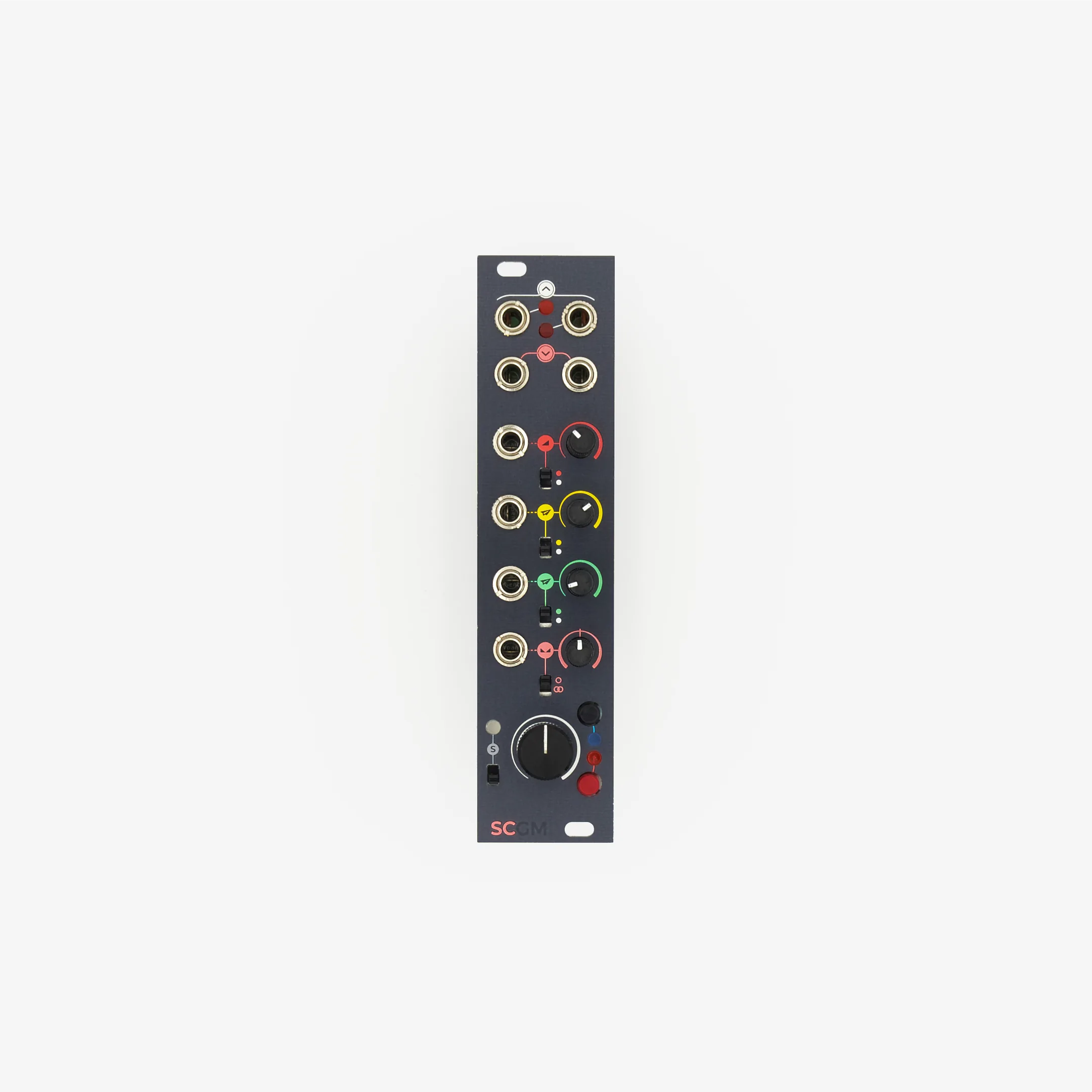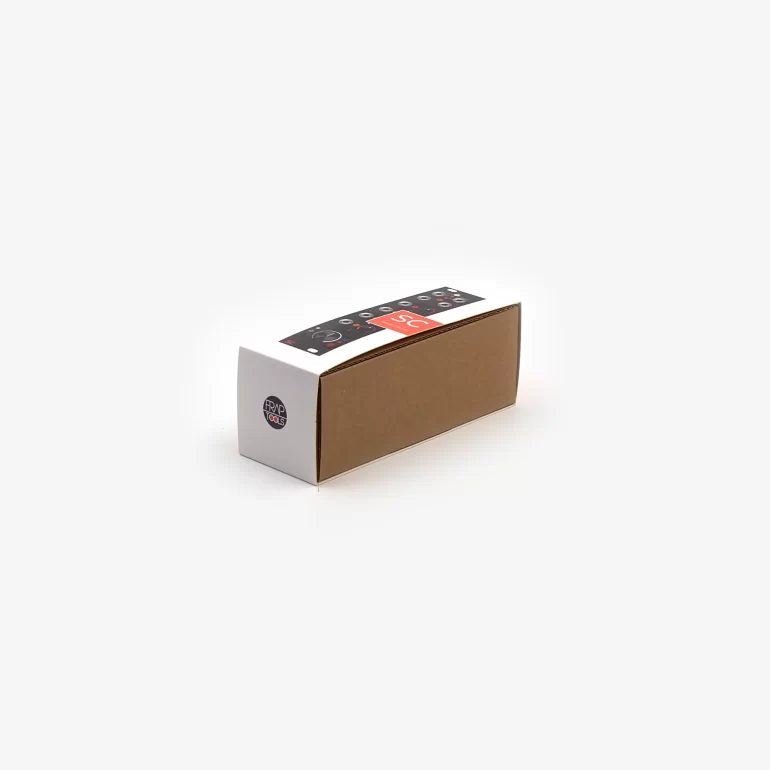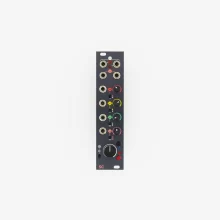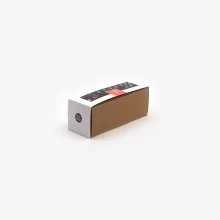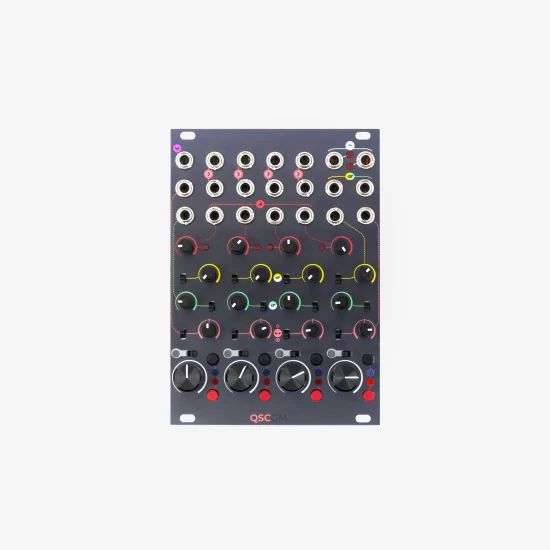SC Stereo Channel
175,00 € + VAT
In stock
Description
The Stereo Channel is a single-channel stereo module for the CGM Eurorack mixer, fully compatible with every other product of this family.
Thanks to its advanced I/O configuration, it can work as stereo-to-stereo, mono-to-mono, mono-to-stereo, and stereo-to-mono.
The gain control and the two mono FX sends can work in pre or post-fader mode, and the panpot can also work as a dual mono crossfader, making it suitable for blending two mono sources into a single mono sum.
All the parameters are voltage-controllable for creative mixing automation.
Electronic latching mute, PFL, and Solo-in-Place complete the feature set suitable both for studio and live performances.
Key Features
Thanks to a flexible I/O semi-normalization pattern, you can use the SC in other ways than stereo. You can patch a mono signal and record it in stereo straight after the VCA to track the voltage-controlled panning or blend two mono sources into one, and more.
The Channel module features two amplitude controls: an input VCA and a volume fader. The input VCA is voltage-controllable and, if the signal has enough amplitude, it can overdrive the circuit with a creamy, fat saturation. A peak LED tells when the signal is clipping, but don’t fear cranking it up!
An output allows you to take the channel output for parallel processing or multitrack recording. You can choose to work pre-fader (straight after the input VCA) or post-fader (with the main fader affecting the signal’s amplitude). The outputs are semi-normaled: use just the left output for a mono sum, and both channels for a stereo signal.
The mute button allows you to remove a channel from the group sum with a click. The mute function works over the input VCA, so it will also mute the effect sends.
The yellow and green knobs are two effect sends levels. They can work pre- or post-fader, and they can be voltage-controlled for expressive and creative results.
The Pan knob defines the stereo placement of the sound, which you can voltage-control as well. The Pan/Crossfade switch lets you use the SC as a dual mono mixer, blending two mono signals into a mono output. When in Crossfade mode, the pan pot controls the balance of the two inputs.
The mute button allows you to remove a channel from the group sum with a click. The mute function works over the input VCA, so it will also mute the effect sends.
The Solo-In-Place switch lets you prepare a “scene” of channels to be isolated from the other ones, and then recall it through the Safe Solo switch on the Group module. It can be seen as a mute group function that allows you to mute all the channels outside the solo scene with a click.
Push the PFL button and rotate the PFL fader on the master module to preview a channel: it’s convenient for tuning your oscillators or checking if everything is ok before bringing whatever sound source into the mix.
Channel Family Comparison
Channel circuits | 1 | 1 | 4 |
Mono/Stereo | Mono | Stereo/Dual mono | Stereo/Dual mono |
Pan | Pan | Pan/Crossfade | Pan/Crossfade |
CV over VCA | ✓ | ✓ | ✓ |
CV over pan | ✓ | ✓ | 2 (on ch. 1 and 4) |
CV over sends | 2 | ✓ | 2 (yellow on ch. 1, green on ch. 4) |
FX sends per channel | 2 | 2 | 2 |
FX sends circuit | Pre-/Post-fader | Pre-/Post-fader | Pre-/Post-fader |
Channel output | Mono Pre-/Post-fader | Mono/stereo Pre-/Post-fader | Stereo Post-fader local mix |
Mute | Mechanical latching | Electronic latching | Electronic latching |
Solo in place | Mechanical latching | Mechanical switch | Mechanical switch |
PFL | Mechanical latching | Electronic latching | Electronic latching |
Fader knob | ⌀ 20 mm | ⌀ 12 mm | ⌀ 12 mm |
Additional inputs | ╳ | ╳ | Mono aux in |
Additional outputs | ╳ | ╳ | 2 local mono FX sends |
Learn
Learn
Learn
Additional information
| Weight | 0,161 kg |
|---|---|
| Dimensions | 15,6 × 6 × 6 cm |
Specs
Size | 6 HP |
Depth | 38 mm |
Current draw | 70 mA @ +12 V 45 mA @ -12 V |
Recommended warmup time | 30 min |
Audio input impedance | > 10 KΩ (mono) > 20 KΩ (stereo) |
Audio output impedance | ≥100 Ω |
CV Input impedance | > 90 KΩ |
Maximum output level before clipping | ≥ 17 dBu |
Direct output gain scale | 11 dB |
Send to G/G (2016) gain scale | 18 dB |
Frequency response | 0.01 to 40 KHz |
Harmonic distortion | < 0.3 % |
Panpot center position tolerance | < 1.5 dB |
Max VCA attenuation | ≤ 70 dB |
More details on the Manualone.
FAQ
A. Use
Our modules are packed with high-quality components that demand a proper power supply and can get sensibly warm.
That is its normal temperature and we can guarantee their performance.
You always need at least one group if you plan to incorporate a master module in your setup. It is not possible to connect any channel module directly to a master module.
The CGM is designed to let you connect up to eight channels (C or QSC) to one group (G), but there is no way of connecting the same channels to two or more groups.
Yes, to take advantage of the Master module’s functions (PFL, headphones, final gain stage), you need at least one group.
We designed the group (G) module together with the classic mono channel (C), which is 6HP wide. After the QSC release, we developed a new Link System with wider plugs that allow you to connect more QSCs in a row.
If you need to connect more QSCs, check your local shop for cable availability!
If you just need to connect a QSC, the classic group-to-channel cable works great, too.
If you experience an abnormal panning on the CGM, check your case’s power supply and your system’s overall power consumption. We experienced that the CGM system sometimes has trouble working in a system close to its maximum Ampère output. An unbalanced power supply may cause the audio to be louder on one channel than on the other.
Try staying below 80% of the total amperage or switch to a more powerful PSU to solve this issue.
The Mute button closes the first VCA of the channel, thus preventing the sound from being routed through all the other VCAs (FX sends, pan, main fader).
The Solo in Place button isolates some channels and mutes the others. However, the mute function it performs is different since it affects the channel after the fader: the sound will still be routed to any pre-fader VCA such as Direct Output and FX Sends (when set to Pre-Fader Mode).
In other words, the Mute button works pre-fader, while the Solo in Place works post-fader.
